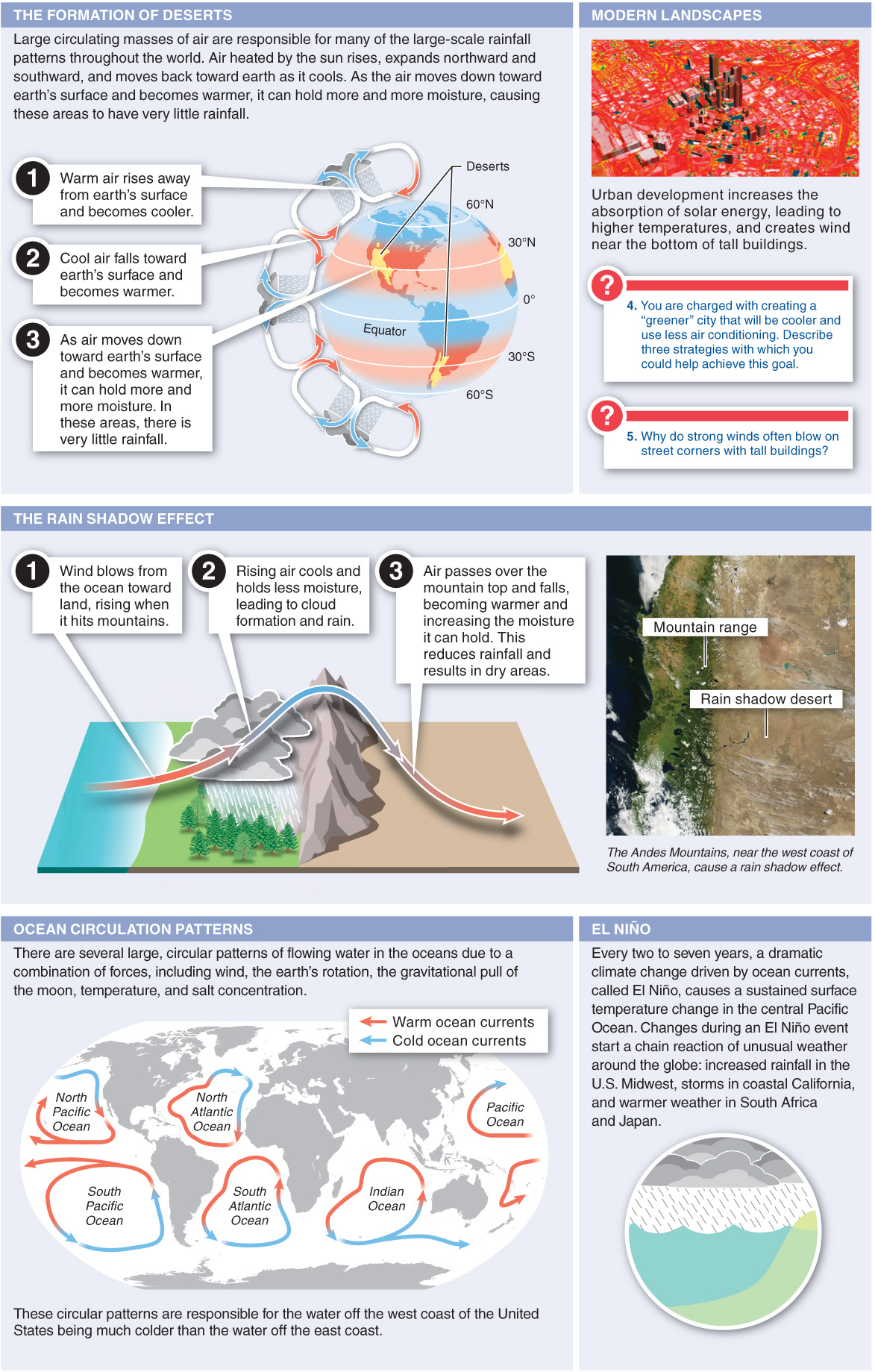15.3–15.5
15.3–Interacting physical forces create weather.
Global patterns of weather are largely determined by the earth’s round shape.

645

Q
Why do beaches on the west coast of the United States have colder water than beaches on the east coast?
- a) The ocean currents in the northern hemisphere rotate in a clockwise direction, so water off the coast of California has just come from the cold north, while water off the coast of New York has just come from the warm south.
- b) West coast beaches are not colder than east coast beaches. Ocean temperatures depend only on latitude.
- c) The Pacific Ocean is deeper than the Atlantic Ocean, so more of the sun’s heat is absorbed by cold, deep water.
- d) Trade winds blowing north from the Tropic of Cancer in the Pacific Ocean sweep the warm air away from the west coast, taking with it much of the warmth of the water.
- e) Deep-
water upwellings bring cool water to west coast beaches, while the surface currents on the east coast cause downwellings, which reduce heat loss due to evaporation.

When a moist ocean wind blows onshore toward a mountain range:
- a) as the air rises, it pulls moisture from the ground, causing the higher elevations to be drier.
- b) as the air goes over the top of the mountains and falls back down toward lower elevations, it holds less moisture, creating a “rain shadow” zone of unusually high precipitation.
- c) as the air rises, it holds less moisture, causing dissipation of all the clouds.
- d) as the air goes over the top of the mountains and falls back down to lower elevations, it holds even more moisture, creating a “rain shadow” desert.
- e) None of the above are correct.

“Top” carnivores:
- a) are more common than secondary consumers.
- b) rely directly on producers for energy.
- c) consume primarily herbivores.
- d) consume primarily carnivores.
- e) rely on symbiotic bacteria to help them digest cellulose.

The 10% rule of energy-
- a) explains why big, fierce animals are so rare.
- b) explains why the biomass of herbivores must exceed that of carnivores.
- c) limits the length of food chains.
- d) suggests that 90% of what an organism eats is used in cellular respiration or is lost as feces.
- e) All of the above are correct.

646